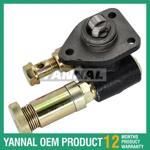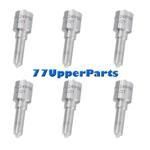Information injection-pump assembly
BOSCH
9 400 616 047
9400616047
ZEXEL
101692-3772
1016923772
KOMATSU
6209711261
6209711261
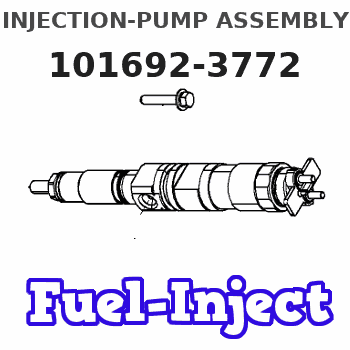
Rating:
Service parts 101692-3772 INJECTION-PUMP ASSEMBLY:
1.
_
5.
AUTOM. ADVANCE MECHANIS
6.
COUPLING PLATE
7.
COUPLING PLATE
8.
_
9.
_
11.
Nozzle and Holder
6207-11-3100
12.
Open Pre:MPa(Kqf/cm2)
19.6{200}
15.
NOZZLE SET
Cross reference number
BOSCH
9 400 616 047
9400616047
ZEXEL
101692-3772
1016923772
KOMATSU
6209711261
6209711261
Zexel num
Bosch num
Firm num
Name
Calibration Data:
Adjustment conditions
Test oil
1404 Test oil ISO4113 or {SAEJ967d}
1404 Test oil ISO4113 or {SAEJ967d}
Test oil temperature
degC
40
40
45
Nozzle and nozzle holder
105780-8140
Bosch type code
EF8511/9A
Nozzle
105780-0000
Bosch type code
DN12SD12T
Nozzle holder
105780-2080
Bosch type code
EF8511/9
Opening pressure
MPa
17.2
Opening pressure
kgf/cm2
175
Injection pipe
Outer diameter - inner diameter - length (mm) mm 6-2-600
Outer diameter - inner diameter - length (mm) mm 6-2-600
Overflow valve opening pressure
kPa
157
123
191
Overflow valve opening pressure
kgf/cm2
1.6
1.25
1.95
Tester oil delivery pressure
kPa
157
157
157
Tester oil delivery pressure
kgf/cm2
1.6
1.6
1.6
Direction of rotation (viewed from drive side)
Right R
Right R
Injection timing adjustment
Direction of rotation (viewed from drive side)
Right R
Right R
Injection order
1-5-3-6-
2-4
Pre-stroke
mm
3.2
3.15
3.25
Rack position
Point A R=A
Point A R=A
Beginning of injection position
Drive side NO.1
Drive side NO.1
Difference between angles 1
Cal 1-5 deg. 60 59.5 60.5
Cal 1-5 deg. 60 59.5 60.5
Difference between angles 2
Cal 1-3 deg. 120 119.5 120.5
Cal 1-3 deg. 120 119.5 120.5
Difference between angles 3
Cal 1-6 deg. 180 179.5 180.5
Cal 1-6 deg. 180 179.5 180.5
Difference between angles 4
Cyl.1-2 deg. 240 239.5 240.5
Cyl.1-2 deg. 240 239.5 240.5
Difference between angles 5
Cal 1-4 deg. 300 299.5 300.5
Cal 1-4 deg. 300 299.5 300.5
Injection quantity adjustment
Adjusting point
A
Rack position
10.9
Pump speed
r/min
1100
1100
1100
Average injection quantity
mm3/st.
78.2
77.2
79.2
Max. variation between cylinders
%
0
-2.5
2.5
Basic
*
Fixing the lever
*
Injection quantity adjustment_02
Adjusting point
-
Rack position
8.2+-0.5
Pump speed
r/min
450
450
450
Average injection quantity
mm3/st.
12.5
11.5
13.5
Max. variation between cylinders
%
0
-15
15
Fixing the rack
*
Remarks
Adjust only variation between cylinders; adjust governor according to governor specifications.
Adjust only variation between cylinders; adjust governor according to governor specifications.
Test data Ex:
Governor adjustment
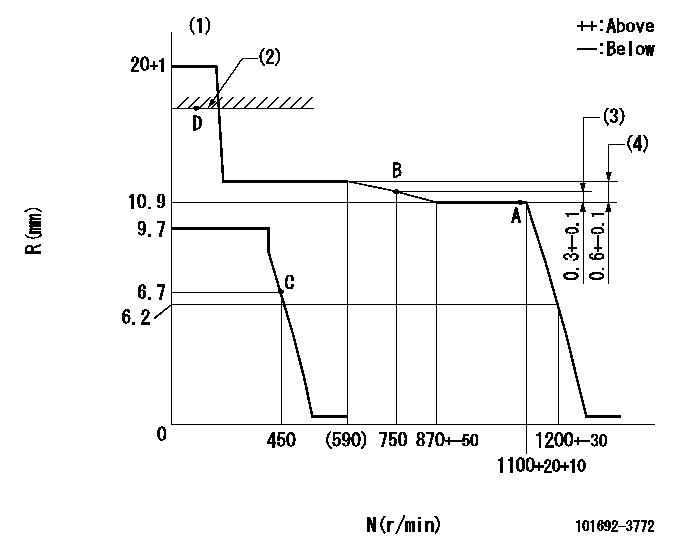
N:Pump speed
R:Rack position (mm)
(1)Target notch: K
(2)RACK LIMIT: RAL
(3)Rack difference from N = N1
(4)Rack difference between N = N2 and N = N3
----------
K=13 RAL=15+0.2mm N1=1100r/min N2=1100r/min N3=450r/min
----------
----------
K=13 RAL=15+0.2mm N1=1100r/min N2=1100r/min N3=450r/min
----------
Speed control lever angle
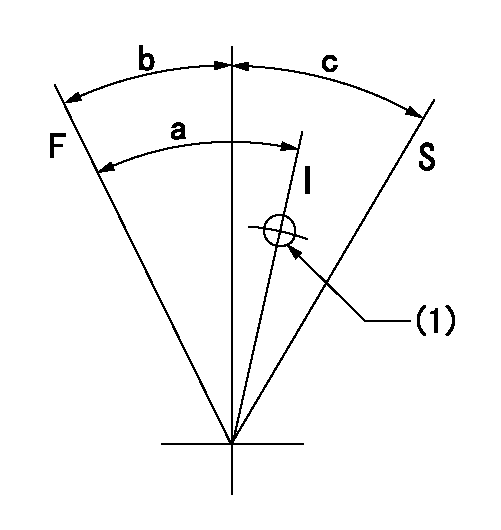
F:Full speed
I:Idle
S:Stop
(1)Use the hole at R = aa
----------
aa=80mm
----------
a=34deg+-5deg b=18deg+-3deg c=32deg+-3deg
----------
aa=80mm
----------
a=34deg+-5deg b=18deg+-3deg c=32deg+-3deg
Timing setting
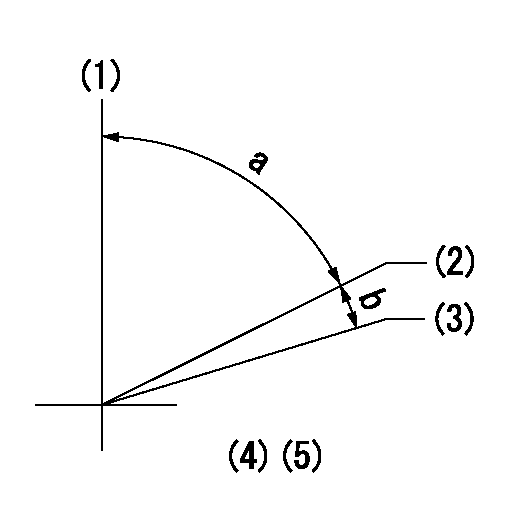
(1)Pump vertical direction
(2)Position of key groove at No 1 cylinder's beginning of injection
(3)Stamp aligning marks on the pump housing flange.
(4)-
(5)-
----------
----------
a=58deg+-3deg b=2deg+-30min
----------
----------
a=58deg+-3deg b=2deg+-30min
Information:
Rating Conditions
Unless otherwise specified, all ratings are based on SAE J1349 standard ambient conditions:* 100 kPa (29.6 inches of Hg) of pressure* 30 percent relative humidity, and* a temperature of 26°C (77°F)Ratings also apply at ISO8665, ISO3046/1, DIN6271, and BS5514 standard conditions.Power for diesel engines is based on:* API gravity of 35 at 15°C (60°F)* fuel LHV of 42,780 kJ/g (18390 Btu/lb) at 29°C (84°F)* fuel density of 839 g/L (7 lb/US gal)Ratings are gross output ratings- the total output capability of the engine equipped with standard accessories. Standard accessories include pumps for lubrication oil, fuel, and jacket water. The gross output, minus the power required to drive auxiliary components, equals the net power available for the external (flywheel) load. Typical auxiliary components include cooling fans, air compressors, and charging alternators.Rating Definitions
It is important to know how the vessel will be operating, so that the rating can match the operating profile. Additionally, proper rating selection is important so that customer perception of price/value is realized. In selecting a rating for a specific application, the most important consideration is time spent at full throttle. These rating definitions identify the percent of time at full throttle and corresponding times below rated rpm. A (Continuous): For heavy-duty service in ocean-going displacement hull vessels such as freighters, tugboats, bottom drag trawlers, and deep river towboats when the engine is operated at rated load and speed up to 100 percent of the time without interruption or load cycling. Typical use is 5000 to 8000 hours per year. B (Medium Duty): For displacement hull vessels such as mid-water trawlers, purse seiners, crew and supply boats, ferries, and towboats where locks, sandbars and curves dictate frequent slowing when engine load and speed are constant with some cycling. The engine may be operated up to 80 percent load factor and at rated load and speed for up to 80 percent of the duty cycle, or 10 hours out of every 12 hours. Typical use is 3000 to 5000 hours per year. C (Intermittent): For planing hull vessels such as ferries, fishing boats moving at higher speeds out and back (i.e. lobster, crayfish and tuna) offshore service boats, and also displacement hull yachts and short trip coastal freighters where engine load and speed are cyclical. The engine may be operated at up to 80 percent load factor and at rated load and speed for up to 50 percent of the duty cycle, or 6 hours out of every 12 hours. Typical use is 2000 to 4000 hours per year. D (Patrol Craft): For planning hull vessels such as offshore patrol boats, customs, police, and some fire and fishing boats. Also used for bow and stern thursters. The engine may be operated at up to 50 percent load factor and at rated load and speed for up to 16 percent of the duty cycle or 2 hours out of every 12 hours. Typical use is 1000 to 3000 hours per year. E (High Performance): For planning hull vessels
Unless otherwise specified, all ratings are based on SAE J1349 standard ambient conditions:* 100 kPa (29.6 inches of Hg) of pressure* 30 percent relative humidity, and* a temperature of 26°C (77°F)Ratings also apply at ISO8665, ISO3046/1, DIN6271, and BS5514 standard conditions.Power for diesel engines is based on:* API gravity of 35 at 15°C (60°F)* fuel LHV of 42,780 kJ/g (18390 Btu/lb) at 29°C (84°F)* fuel density of 839 g/L (7 lb/US gal)Ratings are gross output ratings- the total output capability of the engine equipped with standard accessories. Standard accessories include pumps for lubrication oil, fuel, and jacket water. The gross output, minus the power required to drive auxiliary components, equals the net power available for the external (flywheel) load. Typical auxiliary components include cooling fans, air compressors, and charging alternators.Rating Definitions
It is important to know how the vessel will be operating, so that the rating can match the operating profile. Additionally, proper rating selection is important so that customer perception of price/value is realized. In selecting a rating for a specific application, the most important consideration is time spent at full throttle. These rating definitions identify the percent of time at full throttle and corresponding times below rated rpm. A (Continuous): For heavy-duty service in ocean-going displacement hull vessels such as freighters, tugboats, bottom drag trawlers, and deep river towboats when the engine is operated at rated load and speed up to 100 percent of the time without interruption or load cycling. Typical use is 5000 to 8000 hours per year. B (Medium Duty): For displacement hull vessels such as mid-water trawlers, purse seiners, crew and supply boats, ferries, and towboats where locks, sandbars and curves dictate frequent slowing when engine load and speed are constant with some cycling. The engine may be operated up to 80 percent load factor and at rated load and speed for up to 80 percent of the duty cycle, or 10 hours out of every 12 hours. Typical use is 3000 to 5000 hours per year. C (Intermittent): For planing hull vessels such as ferries, fishing boats moving at higher speeds out and back (i.e. lobster, crayfish and tuna) offshore service boats, and also displacement hull yachts and short trip coastal freighters where engine load and speed are cyclical. The engine may be operated at up to 80 percent load factor and at rated load and speed for up to 50 percent of the duty cycle, or 6 hours out of every 12 hours. Typical use is 2000 to 4000 hours per year. D (Patrol Craft): For planning hull vessels such as offshore patrol boats, customs, police, and some fire and fishing boats. Also used for bow and stern thursters. The engine may be operated at up to 50 percent load factor and at rated load and speed for up to 16 percent of the duty cycle or 2 hours out of every 12 hours. Typical use is 1000 to 3000 hours per year. E (High Performance): For planning hull vessels
